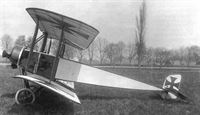
Описание
Страна: Германия
Год: 1915
J.Herris Pfalz Aircraft of WWI (A Centennial Perspective on Great War Airplanes 5)
Pfalz 1915 Biplane
A Flieger-Ersatz-Abteilung communication dated 4 June 1915 reported that the Pfalz biplane, powered by a 100 hp Oberursel U.I rotary engine, recently evaluated by Bavarian air service, had proved a failure because "it was not on an equal level with the parasol and the advantages of good visibility and ease of photography were forfeited." According to the FEA the impracticability of installing an (observer's) machine gun was no different than in the parasol. Trials were stopped and the biplane returned to Speyer. In an aircraft line-up at Speyer, the biplane can just be seen with an infantry rifle mounted on the upper wing, a totally ineffectual weapon, but perhaps a light machine gun was contemplated. Alfred Eversbusch recalled that the company maintained a small, two-seat biplane for communication purposes which may have been this machine. While there are no numbers visible, it is possible that the number P 60 may have been assigned to this airframe.
Pfalz C-Project 1916
In October 1916 Pfalz was among six aircraft manufacturers chosen by Idflieg to design and build a two-seat prototype biplane powered by a 160 hp Mercedes D.III engine. The engineering specifications stipulated a light, maneuverable aircraft intended as an escort fighter (later assigned the CL designation) to protect heavier reconnaissance machines. There is no documentary evidence that Pfalz pursued the project to completion; certainly at the time Pfalz engineers had their hands full with fighter design and development.
Pfalz Short-Range C-Project 1917
Idflieg reported in October 1917 that the Pfalz engineering department had a short-range reconnaissance biplane powered by a 195 hp Benz Bz.IIIb V-8 engine in the advanced design stage. However, construction of the prototype could only proceed after the experimental work involving the Benz V-8 engine was completed and the fighter requirements had been met first.
Pfalz Long-Range C-Project 1917
Idflieg reported in November 1917 that a Pfalz two-seat biplane intended for long-range reconnaissance work and powered by a 245 hp Maybach Mb.IVa engine was in the design stage. Assembly was reported underway in December with flight trials scheduled to begin in January 1918. But "priority development of new fighter aircraft" had placed the project "totally in the background." The prototype was expected to appear on the flight line in March; however, by April it had disappeared from the Idflieg project reports entirely. Fully committed to the development of fighter prototypes through 1918, it is unlikely that Pfalz ever completed the Maybach-powered C-type. It is mentioned neither in post-war documents nor in the Inter-Allied Aeronautical Control Commission report.
- J.Herris Pfalz Aircraft of WWI (A Centennial Perspective on Great War Airplanes 5)
Фотографии
-
J.Herris - Pfalz Aircraft of WWI /Centennial Perspective/ (5)
The spring scenery indicates the Pfalz 1915 biplane was rolled out in the spring of 1915. Pfalz engineers added a biplane wing cellule to a Parasol fuselage. The engine was a 7-cylinder, 80 hp Clerget.
-
J.Herris - Pfalz Aircraft of WWI /Centennial Perspective/ (5)
The second version of the Pfalz 1915 biplane, powered by 100 hp Oberursel U.I engine, was probably photographed during evaluation at the Flieger-Ersatz-Abteilung in Schleissheim.
-
M.Dusing - German Aviation Industry in WWI. Volume 2 /Centennial Perspective/ (85)
In 1915, engineers at Pfalz-Werke also attempted to develop a B airplane. A 60 hp Clerget 7Y rotary engine was used for this purpose. As things stand, it is unclear why a French engine was used for these tests.
The Pfalz 1915 biplane, now powered by a 9-cylinder, 100 hp Oberursel U.I engine, was probably photographed during evaluation at the Flieger-Ersatz-Abteilung in Schleissheim.The different engine and presentation of the wing crosses indicate this may have been a second version of the airplane.



